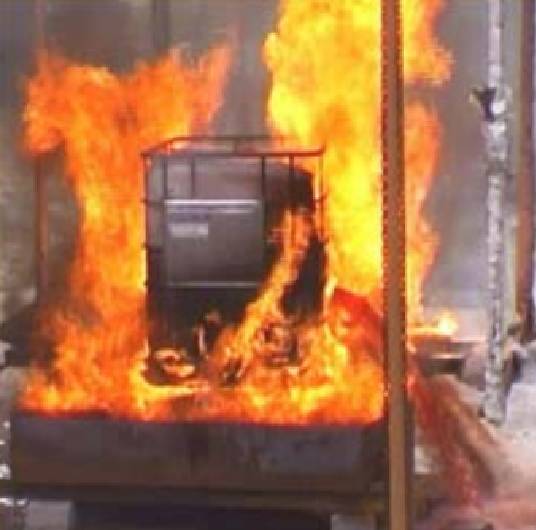
Incident Report Subject: HSE/RR564 - Fire performance of composite IBCs Date of Email report: Sat 29/10/2011 Report Detail:
The use of plastic and composite intermediate bulk containers (IBCs) for the storage of liquids has increased rapidly during the last 10 years. They have a number of advantages over traditional steel drums, in particular; resistance to corrosion, efficient space utilisation in storage and ease of emptying when a valve is fitted. The vast majority of IBCs are made from high-density polythene (HDPE). This material has only limited compatibility with organic solvents. Guidance on suitability of HDPE IBCs for different types of solvent is given in Reference 1. Many of the liquids listed as compatible with HDPE are flammable or combustible: important examples are all the alcohols as well as most acetates and ketones. Notwithstanding the lack of complete compatibility, plastic IBCs are also commonly used in many industries for hydrocarbons for: wastes; fuels such as diesel; solvents such as white spirit; lubricants; edible oils etc. There have been a number of serious recent fires in the UK that started or spread as the direct result of the use plastic IBCs for combustible liquids e.g. CSG (Gloucester 30th October 2000), Distillex (North Shields 12th April 2002) and P&R Laboratories (St Helens October 2001). A characteristic of these fires was the rapid release of liquid from IBCs, inadequacy of bunding and damage caused as a result of the unconfined flow of burning liquid. Following HSE investigations at the scene of these fires, a research project was undertaken to provide data to allow more reliable risk assessments for premises using IBCs for liquid storage and to provide a stimulus and direction for change in IBC selection and design.
Additional Documentation: |

